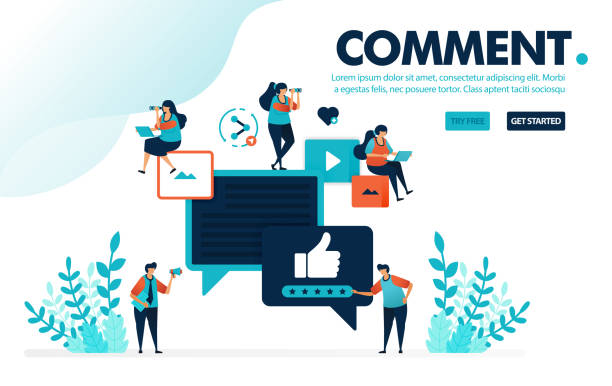Introduction to SEO-Optimized Website Design: Why Is It Important?
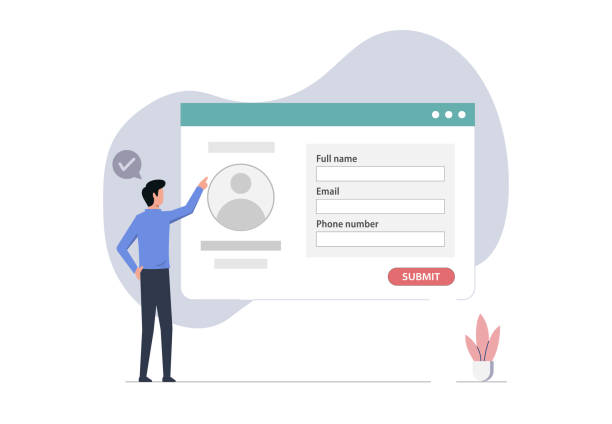
In today’s digital world, having a website is not just an online presence; it’s a powerful tool for attracting customers and growing your business.
But merely having a site is not enough; your site must be discoverable.
This is where the concept of #SEO-optimized_website_design comes in.
Search Engine Optimization (SEO) is a process that makes your website more friendly to search engines like Google, consequently earning a higher rank in search results.
This descriptive and educational section highlights the importance of SEO-optimized website design.
Without SEO, even the best websites might get lost among a flood of online information and fail to acquire the necessary traffic.
Increasing website visibility means increasing organic web traffic, which directly leads to sales and brand awareness.
A website designed with an SEO-friendly approach from the start reduces digital marketing costs in the long run and offers a better return on investment (ROI).
This not only includes using appropriate keywords but also pays attention to the site’s technical structure, loading speed, mobile compatibility, and user experience.
An SEO-optimized website design transforms your website into a powerful asset that continuously attracts new visitors and converts them into customers.
This approach helps you stay ahead in the intense online market competition and reach your target audience.
In fact, SEO is a long-term investment for your sustained online success.
Ignoring SEO in the design process is like building a large store in a remote desert; no matter how excellent your products are, if no one can find you, your business will not flourish.
Therefore, this topic is considered a fundamental principle in any modern web development project.
Worried about losing customers because you don’t have a professional e-commerce site?
With e-commerce site design by RasaWeb, forget these worries!
✅ Significant increase in sales and conversion rate of visitors to customers
✅ Professional and user-friendly design that builds customer trust
⚡ Get free consultation from RasaWeb
Basic SEO Principles in Web Design: Technical and Content Approaches

To achieve truly SEO-optimized website design, special attention must be paid to the two main pillars of SEO: technical SEO and content SEO.
This specialized and guiding section delves into these principles in detail.
Technical SEO involves optimizing the website’s behind-the-scenes infrastructure that search engines use to crawl and index pages.
Factors such as Sitemap, Robots.txt file, friendly URL structure, and using HTTPS protocol are among the most important elements of technical SEO.
Site loading speed also plays a vital role, as search engines prefer faster websites and they provide a better user experience.
Alongside technical SEO, content SEO is equally important.
This aspect includes keyword research, creating high-quality and relevant content, optimizing titles and meta descriptions, and correct use of heading tags (H1-H6).
The main goal of content SEO is to help search engines understand what your content is about and how it can answer users’ questions.
A successful SEO-optimized website design combines both aspects harmoniously to achieve the best results.
Ignoring either of these two aspects can lead to poor ranking results.
For example, if your content is excellent but the site has technical issues that prevent search engines from indexing it correctly, your efforts will be fruitless.
Similarly, a technically perfect site, without valuable and relevant content, cannot attract users.
Therefore, the integration of technical and content SEO is the cornerstone of a powerful website in search results.
This comprehensive approach enables you to stand out well in the tough digital competition.
Content and Keyword Strategy for SEO Success
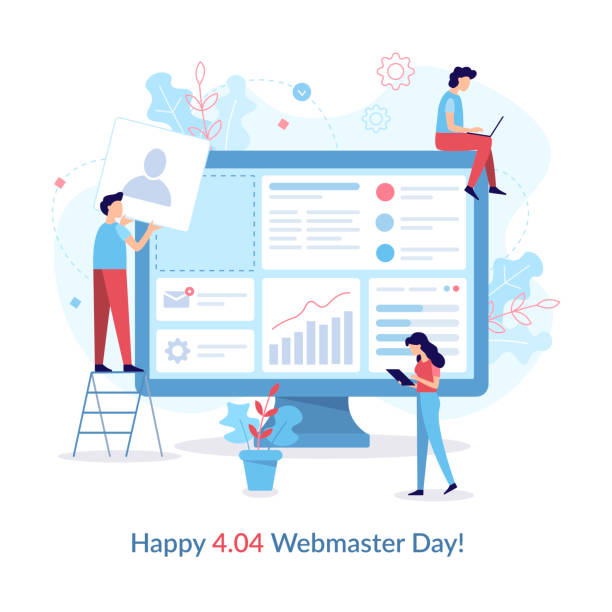
Content is king, but in the world of SEO, content is king when built upon a powerful keyword strategy.
This analytical and educational section shows you how to implement a comprehensive content strategy for SEO-optimized website design.
The first step in this path is accurate keyword research.
This process involves identifying phrases that your target audience uses to find your products or services in search engines.
Tools like Google Keyword Planner, Ahrefs, and Semrush can be helpful in this regard.
After identifying suitable keywords, it’s time to produce valuable and high-quality content.
Your content should not only be optimized for search engines but also be engaging, informative, and useful for users.
Types of content include blog articles, product and service pages, videos, infographics, and case studies.
Each of these formats can be effective in attracting different segments of the audience.
| Content Type | SEO Benefits | Important Notes |
|---|---|---|
| Blog Articles | Increase long-tail keywords, attract organic traffic, domain authority | Regular updates, specialized and in-depth content |
| Product/Service Pages | Ranking for transactional keywords, increase conversion rate | Detailed descriptions, high-quality images, customer reviews |
| Infographics/Images | Improve user engagement, increase social sharing | Low-volume files, appropriate Alt Text |
| Videos | Increase user dwell time, rank in video search | Optimize title and description, subtitles, educational/entertaining content |
Your content should answer user questions and solve their problems.
Natural integration of keywords into the text, without overdoing it (keyword stuffing), is very important.
Also, using internal links to other pages on your site and external links to reputable sources, helps improve site credibility and content depth.
A strong content strategy not only helps you rank higher, but also transforms your website into a reliable source of information and directs targeted traffic to you.
User Experience (UX) and Its Role in SEO Improvement

In recent years, search engines like Google have paid special attention to User Experience (UX) in website ranking.
This descriptive and guiding section discusses how excellent user experience can contribute to SEO-optimized website design.
A website with poor UX, even if it has good technical SEO, may eventually lose its rankings.
The reason is that Google values user behavioral signals such as Bounce Rate, time spent on site, and number of pages visited.
When users have a good experience on your website, they are more likely to spend more time on it, visit more pages, and return.
These signals tell search engines that your website is valuable and reputable, thus helping to improve your ranking.
An SEO-optimized website design should consider UX at every stage of the design and development process.
Key UX factors affecting SEO include: easy navigation, attractive visual design, text readability, responsiveness (Responsive Design) for different devices, and clear contact forms.
If users cannot easily find what they are looking for, or if your site does not display correctly on mobile, they will quickly leave.
This not only harms your SEO ranking but also eliminates conversion opportunities.
In fact, an effective SEO-optimized website design should place user experience at its core to satisfy both search engines and users.
This approach means designing a website that not only presents information well but is also enjoyable and hassle-free to interact with.
Are you dissatisfied with the low sales of your e-commerce site?
RasaWeb is your solution for a professional and high-selling e-commerce site.
✅ Significant increase in sales and revenue
✅ Easy and enjoyable shopping experience for customers
⚡ Get free consultation from RasaWeb now!
Technical Aspects of SEO-Optimized Website Design: Speed and Mobile Optimization

The technical aspects of SEO-optimized website design form the backbone of your website’s performance in search engines.
This specialized and descriptive section focuses on two critical factors: site loading speed and mobile compatibility.
Page loading speed is one of Google’s ranking factors and significantly impacts user experience.
Studies have shown that every second of delay in page loading can increase bounce rate and decrease conversion rate.
To optimize speed, attention should be paid to image compression, optimizing CSS and JavaScript codes, using browser caching, and choosing appropriate hosting.
Content Delivery Network (CDN) can also help improve speed for users in different geographical locations.
Another critical factor is mobile compatibility.
Given the significant increase in mobile usage for internet access, Google has adopted the Mobile-First Indexing policy; meaning it considers the mobile version of your site as the primary version for indexing and ranking.
Therefore, having a responsive design that displays your site well on all screen sizes is essential for an SEO-optimized website design.
Additionally, Structured Data also plays an important role in technical SEO.
By using this data, you can help search engines better understand your content and display it in more attractive forms (such as Rich Snippets) in search results.
This not only improves click-through rate (CTR) but also increases your site’s credibility.
Ultimately, technical optimization is a continuous process that requires ongoing monitoring and updates to keep your site at its best functional state.
Link Building and Increasing Domain Authority for Better Ranking
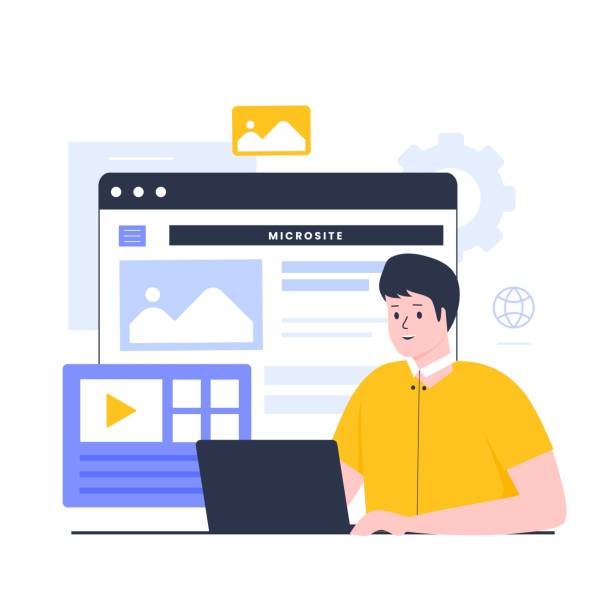
Link Building is one of the most important pillars of SEO-optimized website design and a critical ranking factor for search engines.
This educational and guiding section discusses how inbound links (backlinks) can increase your domain authority and ultimately help you rank better in search results.
Backlinks are like votes of confidence from other websites.
The more reputable and relevant websites link to your site, the higher your site’s Domain Authority will be in the eyes of search engines.
But not all links have equal value.
Quality trumps quantity.
One link from a high-authority website relevant to your field of work is worth much more than dozens of links from unreliable or spammy websites.
Link building strategies include creating valuable and shareable content (which naturally attracts links), outreach to other websites to request links, participation in reputable directories, and sponsored articles (advertorials).
An SEO-optimized website design should from the beginning provide a platform for link building to occur in the best way.
This includes having deep and specialized content that others want to refer to.
Also, monitoring backlink profiles and disavowing spammy or malicious links (Disavow) is essential for maintaining site SEO health.
Google’s algorithms are highly intelligent and can detect unnatural links, which can lead to penalties for your site.
Therefore, an organic and ethical approach to link building is very important.
The ultimate goal is to build a network of natural and high-quality links that increase the credibility and trustworthiness of your site in the eyes of search engines.
Tools and Metrics for Measuring SEO Success: Performance Review
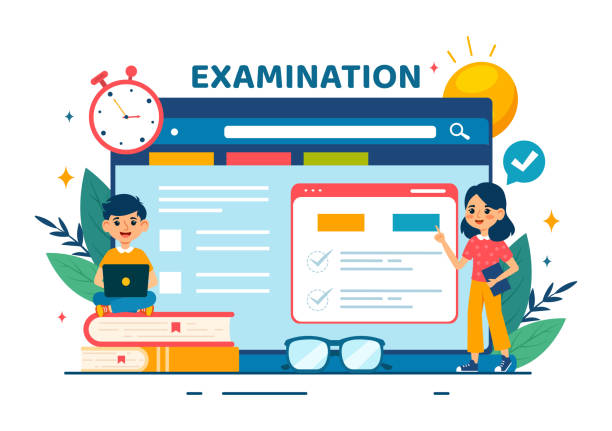
To ensure that your SEO-optimized website design achieves the desired results, its performance must be continuously measured and analyzed.
This analytical and specialized section introduces key tools and important metrics for evaluating SEO success.
Google Analytics and Google Search Console are two free and powerful Google tools that every website administrator should use.
Google Analytics provides detailed information about website traffic, user behavior, traffic sources, and conversion rates.
On the other hand, Google Search Console helps you monitor your site’s performance in search results, identify indexing issues, and view keywords that users use to find your site.
Key metrics to pay attention to include: Keyword Rankings, organic traffic, click-through rate (CTR), bounce rate, time on page, and landing pages.
Analyzing these metrics helps you identify the strengths and weaknesses of your SEO strategy and make data-driven decisions.
| Tool | Main Use | Notes |
|---|---|---|
| Google Analytics | Website traffic analysis, user behavior, conversion rate | Free, comprehensive, requires initial setup |
| Google Search Console | Monitor search performance, indexing issues, keywords | Free, essential for SEO health |
| Ahrefs/Semrush | Keyword research, competitor analysis, backlink analysis | Paid, professional, very powerful tools |
| PageSpeed Insights | Evaluate site loading speed and provide suggestions | Free, Google tool for technical optimization |
Paid tools like Ahrefs and Semrush also offer more advanced capabilities such as competitor analysis, in-depth keyword research, and backlink analysis, which are very useful for SEO professionals.
Regular review of SEO reports and making necessary adjustments based on them is an integral part of maintaining an SEO-optimized website design.
This data-driven approach allows you to adapt your strategies and ensure your return on investment.
Common Mistakes in SEO-Optimized Website Design and How to Avoid Them
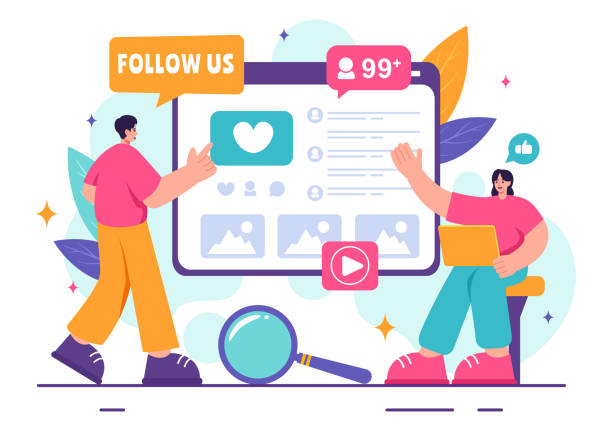
Even with the best intentions, mistakes can occur in the process of SEO-optimized website design that jeopardize the site’s SEO performance.
This thought-provoking and guiding section reviews some common mistakes and provides solutions to avoid them.
One of the biggest mistakes is ignoring SEO from the very beginning of the design process.
Many businesses first design a website and then think about SEO, which leads to higher reconstruction costs and lost time.
SEO should be considered from the planning and wireframing stages.
Another common mistake is producing low-quality or duplicate content.
Poor content not only deters users but search engines also detect it and penalize the site.
Overuse of keywords (Keyword Stuffing) is also an outdated and harmful tactic that damages your SEO ranking.
Lack of mobile optimization, given the importance of Google’s Mobile-First Indexing, is considered a major error.
A website that does not display correctly on mobile devices not only provides a poor user experience but also loses its ranking.
Technical issues such as broken links, slow loading speed, absence of a sitemap, or inappropriate Robots.txt file can also prevent search engines from correctly crawling and indexing the site.
Lack of proper internal link building is also a common mistake.
Internal links help search engines understand your site’s structure and determine the importance of different pages.
Finally, lack of regular monitoring and analysis of SEO performance can also mean missing out on optimization opportunities.
By avoiding these mistakes and adopting a comprehensive and continuous approach to SEO, you can ensure that your SEO-optimized website design performs at its best.
Does your current corporate website present a worthy image of your brand and attract new customers?
If not, transform this challenge into an opportunity with RasaWeb’s professional corporate website design services.
✅ Significantly improves your brand’s credibility and image.
✅ Paves the way for attracting new leads and customers for you.
⚡ For free and specialized consultation, contact RasaWeb now!
Future Trends in Website Design and SEO: Preparing for Changes

The world of SEO-optimized website design and search engine optimization is constantly evolving.
This news and analytical section examines future trends that must be prepared for to maintain superiority in the digital environment.
One of the most important future trends is the increasing importance of Artificial Intelligence (AI) in search algorithms.
Algorithms like Google RankBrain and BERT have shown that Google is increasingly capable of understanding the meaning and intent behind searches, not just keywords.
This means a greater emphasis on producing comprehensive, high-quality, and conceptual content that addresses the real needs of users.
Voice Search is also rapidly growing and creates the need to optimize content for conversational answers and longer queries.
Future SEO-optimized website design should include an understanding of how users interact with voice assistants.
Also, on-page user experience (Page Experience), which includes Core Web Vitals, will remain an important ranking factor.
Speed, visual stability, and site interactivity are critical elements.
Video content also continues to increase in popularity, and optimizing videos for search (Video SEO) becomes more important.
Additionally, blockchain and Web 3.0 may also impact how users interact with the web and how content is indexed in the future, although they are still in early stages.
For a leading SEO-optimized website design, these dynamic changes must be considered, and strategies updated accordingly.
Flexibility and the ability to adapt to new algorithms are key to long-term success.
Conclusion and Practical Steps for Effective SEO-Optimized Website Design

In this comprehensive article, we covered various aspects of SEO-optimized website design, from its basic principles and importance to content strategies, technical aspects, the role of user experience, link building, measurement tools, and future trends.
This guiding and descriptive section summarizes key points and provides practical steps to create a truly SEO-optimized and powerful website.
Remember that SEO is not a one-time process, but a long-term and continuous investment that requires monitoring and updating.
Practical steps for an effective SEO-optimized website design include:
Firstly, thorough SEO planning from the very beginning of the design project.
This includes in-depth keyword research and designing the site structure based on it.
Secondly, producing high-quality, unique, and valuable content that naturally incorporates your target keywords and answers user questions.
Thirdly, technical optimization of the site including loading speed, mobile compatibility, use of HTTPS, and structured data.
Fourthly, special attention to user experience (UX) to reduce bounce rate and increase user dwell time.
Fifthly, creating a natural and high-quality link-building strategy to increase domain authority.
Sixthly, continuous use of SEO tools such as Google Analytics and Search Console to monitor performance and identify improvement opportunities.
By implementing these steps, you can ensure that your website is not only visually appealing but also highly visible in search engine results and drives targeted traffic to your business.
Success in SEO is success in online business.
Frequently Asked Questions
| Row | Question | Answer |
|---|---|---|
| 1 | What is an SEO-optimized website? | It is a website designed and developed in compliance with Search Engine Optimization (SEO) principles to achieve a higher ranking in search results. |
| 2 | Why is having an SEO-optimized website important? | It increases visibility, attracts organic traffic, boosts conversions, and builds brand credibility, all of which contribute to business growth. |
| 3 | What are the key elements of SEO-optimized website design? | Technical SEO (speed, mobile compatibility), on-page SEO (keywords, content), user experience (UX), and website security (HTTPS). |
| 4 | How does website speed affect SEO? | Faster websites improve user experience, reduce bounce rates, and are favored by search engines, leading to better rankings. |
| 5 | Is mobile compatibility important for SEO? | Absolutely. Google uses mobile-first indexing, so responsive design for mobile is critical for ranking. |
| 6 | What role does content play in SEO-optimized website design? | High-quality, relevant, and keyword-optimized content is fundamental for attracting users and signaling relevance to search engines. |
| 7 | What is keyword research and why is it important? | Finding popular search queries people use. This process helps align content with user intent and attracts relevant traffic. |
| 8 | How is user experience (UX) related to SEO? | Good UX (easy navigation, readability) keeps users on the site longer, reduces bounce rate, and sends positive signals to search engines. |
| 9 | What is a Sitemap and how does it help SEO? | A file that lists all pages on a site. It helps search engines crawl and index your site more effectively. |
| 10 | Should I use HTTPS for my website? | Yes, HTTPS provides security and is considered a minor ranking factor. It also increases user trust. |
And other services of RasaWeb Advertising Agency in the field of advertising
Smart Data Analysis: A fast and efficient solution to increase click-through rates with a focus on custom programming.
Smart Conversion Rate Optimization: A dedicated service for growing user engagement based on Google Ads management.
Smart Sales Automation: A combination of creativity and technology to increase site traffic through intelligent data analysis.
Smart Advertising Campaign: A fast and efficient solution for analyzing customer behavior with a focus on intelligent data analysis.
Smart Marketplace: An effective tool for analyzing customer behavior with the help of attractive user interface design.
And over hundreds of other services in the field of internet advertising, advertising consultation, and organizational solutions
Internet Advertising | Advertising Strategy | Advertorials
Sources
- Increasing Website Traffic with SEO
- Standard SEO Website Design
- Important SEO Tips 2024
- Website Optimization for Search Engines
? Are you ready to grow your business in the digital world? RasaWeb Afarin Digital Marketing Agency, by providing comprehensive and innovative services, smooths your path to success. From professional website design, which is the showcase of your business, to complex SEO strategies and advertising campaign management, we are by your side every step of the way. With us, your brand will be seen at its peak.
📍 Tehran, Mirdamad Street, next to Bank Markazi, Kazeroun South Alley, Ramin Alley, No. 6

